20 February 2023
![]() 9 mins Read
9 mins Read
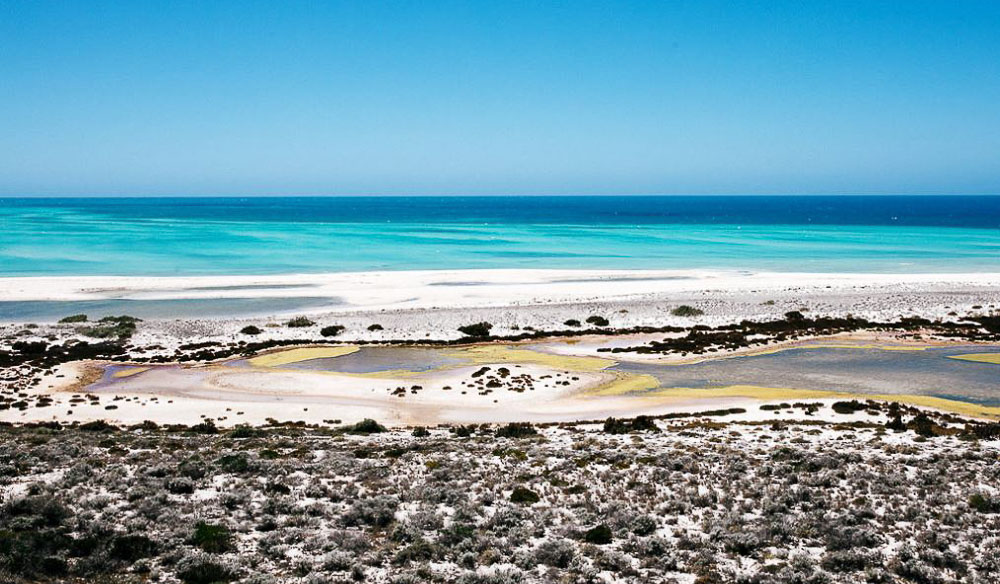
Nine hours’ drive north of Perth, across the ocean from Australia’s westernmost point, is an unlikely place for a love story. Seemingly in the middle of nowhere, the lone wilderness of Dirk Hartog Island is as spectacular as it is desolate, the land’s chalk dryness tempered by the seagrass-mottled ocean’s expanse of blue. Its long, thin form sees the meeting of wildflower speckled scrub with motionless turquoise bays. Sahara-like dunes lead to rugged cliff edges; crimson saltpans preface watery horizons that whales seem to bounce along. And our lovebirds? What makes this tale even more serendipitous is that neither of them intended to be here.
Kieran Wardle was just 18 when he arrived for what he thought was a week-long fill-in gig, covering for a station hand who’d taken ill. When it turned into a longer stay, he put a call out for a camp cook. Word reached Melbourne, where 19-year-old Tory was part way through her chef’s apprenticeship. She crossed back to her home state and before the year was out, she and Kieran were more than just work mates.
“We met briefly in Perth at a party and I never saw her again until I picked her up to bring her to the island, three years later,” says Kieran. “She was in a white top and pants and I took one look and thought, this girl is not going to last.”
But Tory’s easy-going, boots-and-all style saw Kieran come up with methods to extend her stay. “I guess it was the romance of an island, having no one else around, long beach walks and camping out. Things happen,” he says, laughing. “And I may have cancelled the plane out a few times.” Twenty-two years and three children later, they are still the only people to call the island home.
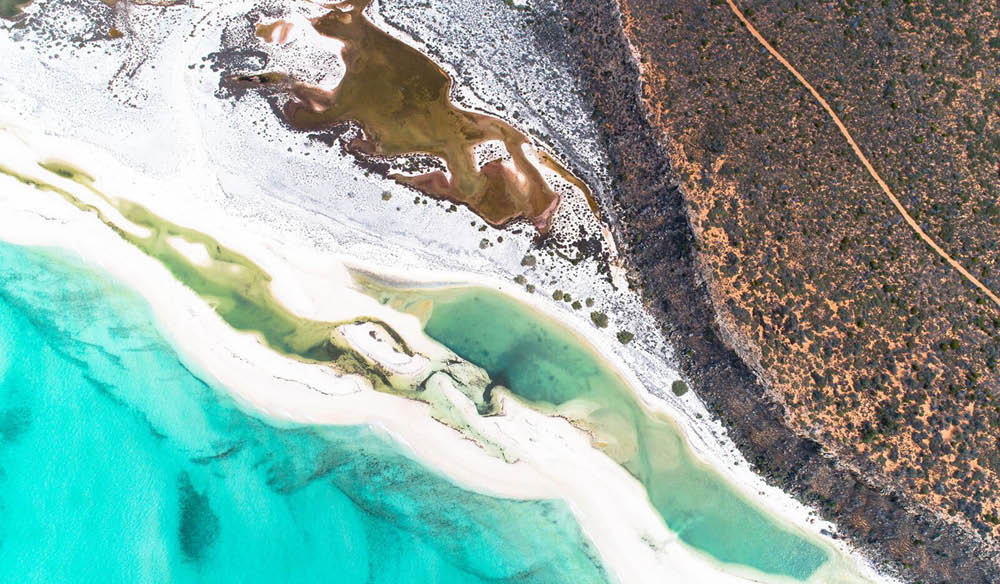
The dramatic coastline of Dirk Hartog Island
Located in Western Australia’s World Heritage-listed Shark Bay, Dirk Hartog Island harbours other surprises on its 80-kilometre-long finger of earth. More than 400 years ago, a Dutch merchant ship captain was late making a left turn and accidentally came across the place that now bears his name. He became the first European to land on the west coast, 154 years before Captain James Cook claimed Australia’s eastern side for Britain. Hartog left a pewter plate inscribed with an ‘I was here’ of sorts, and eventually returned to Europe, prompting a rewrite of world maps.
Jump forward quite a bit and Kieran’s grandfather, a supermarket mogul whose chain was eponymously named ‘Tom the Cheap’, was running a sheep station on the outpost. Kieran and Tory had already started to blend it with tourism when the island became a national park in 2009, spelling an end to 139 years of pastoralism.
Evidence of the couple’s extraordinary resourcefulness is everywhere. The ocean-facing shearer’s quarters have become an eco lodge with a cooling grass terrace; beach-salvaged wooden planks form the bar fronting Tory’s open kitchen; stone collected by hand has built a holiday villa (the stonemason was paid in wine).
Then there’s the daily nuts and bolts: with rain scarce, a windmill journeys water from a bore seven kilometres away; solar panels and a wind turbine meet most electricity needs; silkie chooks supply eggs; and fresh fruit and veg is barged across once a week from Denham, Shark Bay’s main township of 600 residents. Meat arrives monthly, but seafood is sourced locally – every time someone puts a line in or prises oysters off the rocks. Being far flung doesn’t mean Tory compromises on food – her island flavours are the stuff of legend. “That’s the biggest surprise people have,” she admits. “There’s such good fresh food. They expect something basic.”
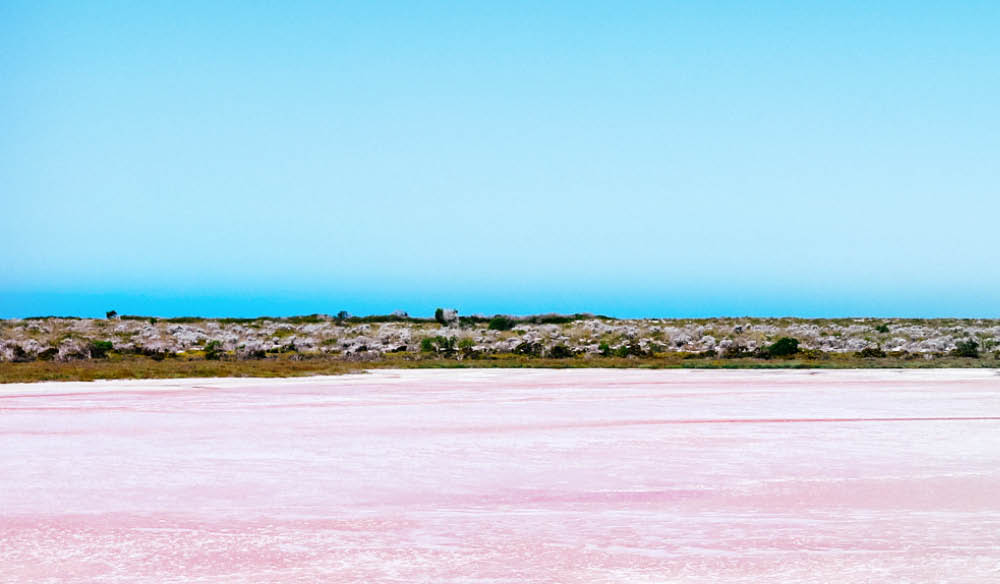
Exploring the stunning Rose Lake
Sharp culinary nous means the Wardles attract an appreciative mix of 4WD explorers, nature enthusiasts, fishing fans and families, all connected by their love of good grub. It reaches its zenith at the annual Gourmet Island Escape. Daily, guided 4WD adventures are enhanced by fire pit cook-ups, long table lunches and candlelit dinners. The inaugural event in 2017 drew people from around Australia.
It’s how I find myself rattling along a corrugated track that morphs into rocky limestone terrain and then smooth, ochre soils edged by velvety shrubs. As we travel from one end of the isle to the other, we pass broad leaf grasses with tropical leanings, khaki bushes sprouting clusters of banana-shaped leaves and yellow baubles of colour, hinting at the mass of wildflowers to come. The landscape changes shyly but distinctly, and exclamation marks are dropped without warning: the Loop, a realm of moving sand dunes, bear sharp edges with invisible drops.
“You definitely want to stick to the tracks here,” advises our convoy’s guide, Lindsay Wiltshire, nicknamed ‘MacGyver’. He can tell you exactly what happens if you don’t – from skylarking personal experience. The former cray fisherman and mad-keen skydiver is a regular visitor. He and art teacher partner Karen Sabitay volunteer as caretakers while Kieran and Tory are away. He deftly leads us to Turtle Bay, a haven for 3000 turtles that come to nest at what is Australia’s largest loggerhead breeding colony.
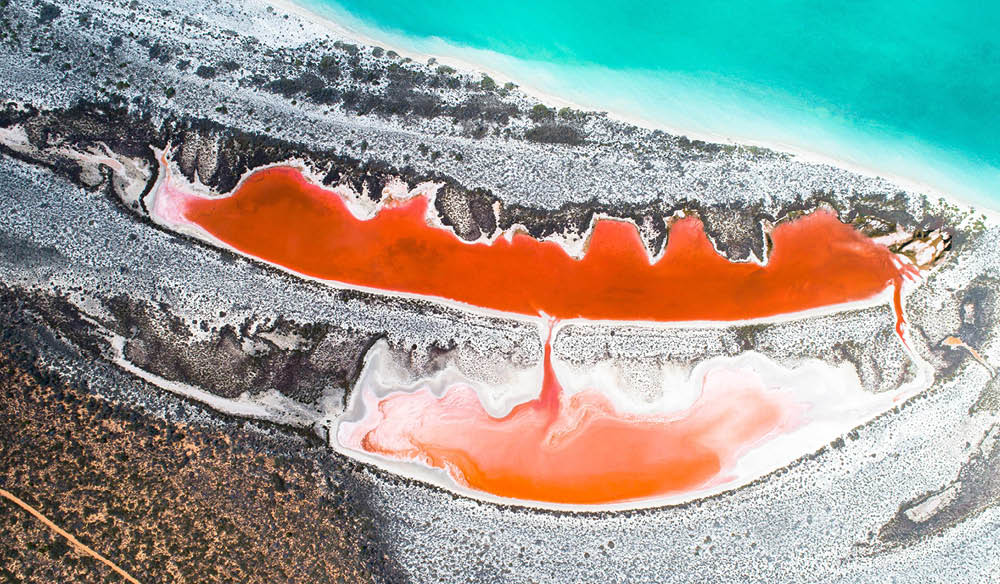
Explore the stunning views of Dirk Hartog Island and you’ll find that not only are the views spectacular, but it also has some stunning secret natural phenomenon (photo: Will Wardle).
Beyond its pale orange bluffs, we reach Cape Inscription – the spot where Hartog nailed his plate into a post. Here we don’t so much glimpse but are overwhelmed by whales on their annual migration. Their torpedo-like frames twist in the air before hitting the ocean in an explosion of white water.
Eventually, we drive on to Urchin Point. The rickety shed is all that stands, its insides scrawled with the names and musings of countless visitors. A bunch of fishing mates in stubby shorts are sharing a plate of cheese and olives when we drop in. Their tented swags fan around the remote retreat. “Life’s a beach,” they say, clinking beer bottles.
On other days we motor to the blowholes, forces of nature that sound like jet engines firing up as each shoots spray into the air, just like whales puffing out vapour. A cloudy mist blows over the desert moonscape beyond, coating us in brine.
Further south, we follow an Aboriginal guide, Darren ‘Capes’ Capewell, around Surf Point as reef sharks dart in the shallows. He plans to bring his Wula Gura Nyinda tours to the island in 2018, sharing 25,000 years of his ancestors’ history. We clamber up the point, sighting the white belly of a humpback rolling in the surf, flanked by two playful dolphins.
“There’s a very strong energy here, in Shark Bay, where the desert meets the ocean,” says Capes. “It’s important to connect people to country, to nature. People can feel it, rather than just see it.”
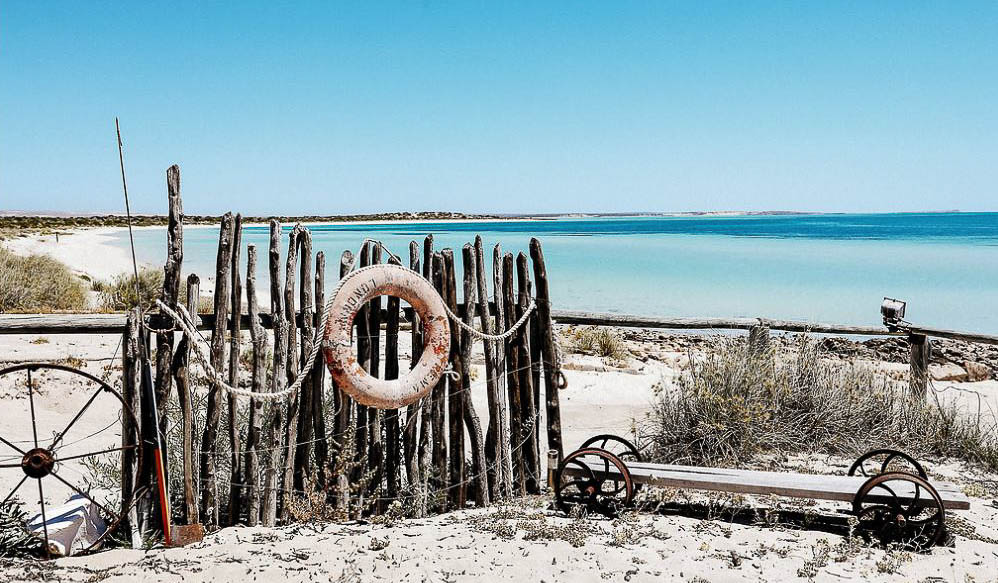
Elements of the Dirk Hartog Eco Lodge are made from beach-salvaged wood (photo: Elise Hassey).
A sense of restored balance befalls us all each night, when we eat together on long tables, chattering about flat tyres, amateur fishing blunders and wild beauty. Laughter is shared among us otherwise-strangers as easily as wine. But dawn is when the magic happens. Lodge-dwellers and campers alike emerge in an unspoken daily ritual, silently gawping at clouds ignited with shades of coral as the curve of the earth glowers in yellow gold. Tory, an early riser, catches it from her kitchen every day.
“I fell in love with the island before I fell in love with Kieran,” she says. Kieran’s pride aside, it’s not hard to see why.
Getting there: Shark Bay’s main township, Denham, is about 820 kilometres, or nine hours’ drive from Perth. If driving, the reservation-essential island barge departs from Steep Point. It runs year-round, on demand. Skippers Aviation is the sole aviator operating flights from Perth to Shark Bay (Monkey Mia) on Mondays, Wednesdays, Fridays and Sundays. From Denham airport, take a highly recommended scenic flight to DHI with Shark Bay Aviation, or arrange with the lodge to boat across. Package stays include transport to the island. Day trips are also offered.
Staying there: Wild camping and remote shed shelter around the island are options, but we recommend the rustic comfort of either the Dirk Hartog Island Eco Lodge or private ocean villa.
Eating there: With an all-inclusive package, meals are catered for by the cooks at Dirk Hartog Island Eco Lodge. Guests who opt for a non-catered option have kitchen and room facilities available. If you’re camping, you will need to bring fuel and water.
Playing there: Along with beach walks, swims and snorkels, you can follow the old goat trails on self-guided walks and explore the island by 4WD on your own or with a guide.
When to go: Shark Bay enjoys mild-to-warm temperatures year-round; peak season is March to May, but it’s pleasant through to October. Wildflowers bloom and whales breach from late August.
Gourmet Island Escape: Blending starlit cook-ups and chaperoned 4WD adventures, this annual event reveals the island’s wild diversity while keeping you ridiculously well fed and watered. Guided from Steep Point on the WA mainland, the week includes the barge trip to Dirk Hartog Island, a tour of the former sheep station, campfire paella, a clifftop feast, long, slow lunch and visits to island icons. 6‑11 August 2018.
Was there 1969, have dreamed of going back to visit every year since. Blessings to all there.